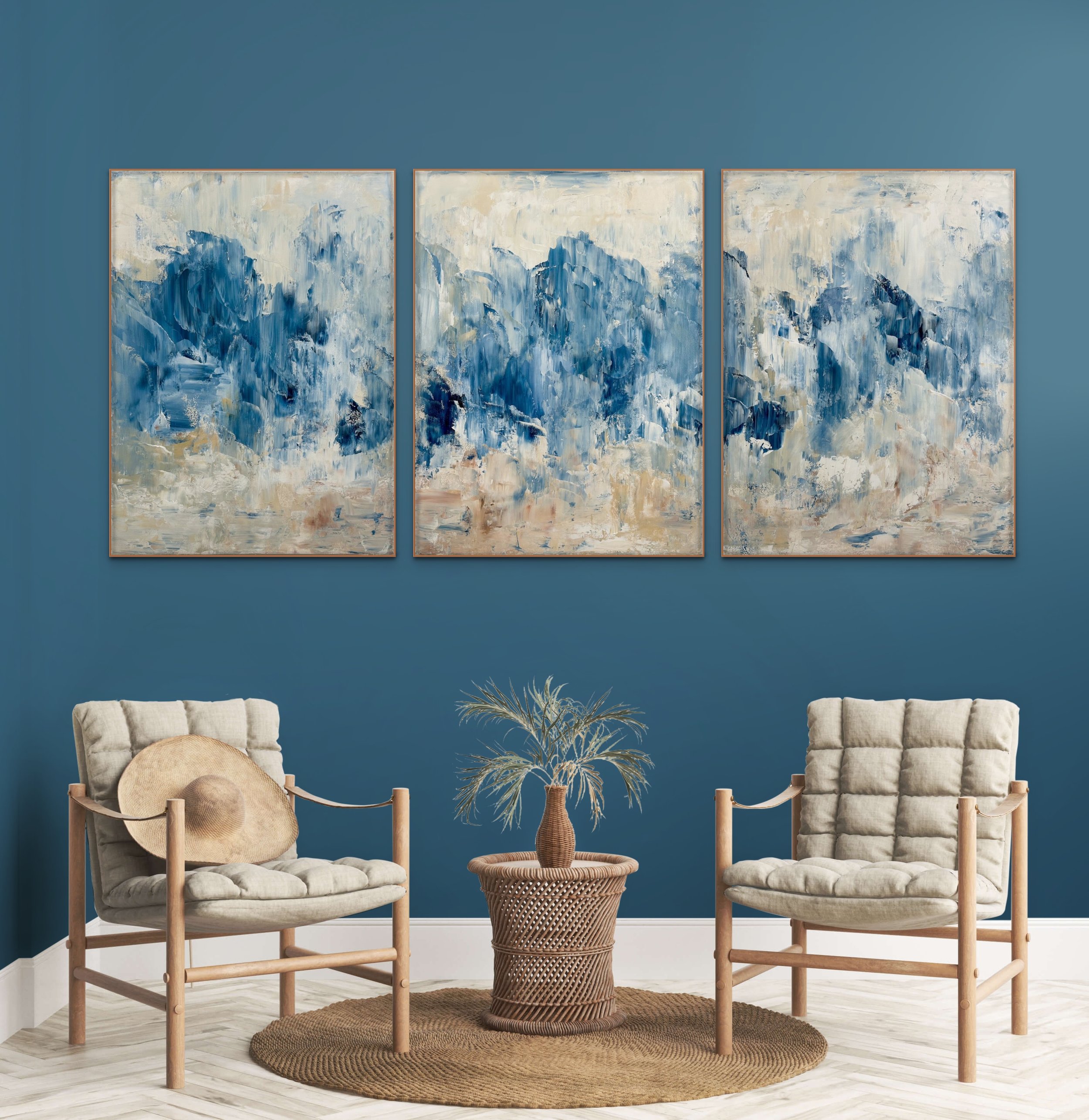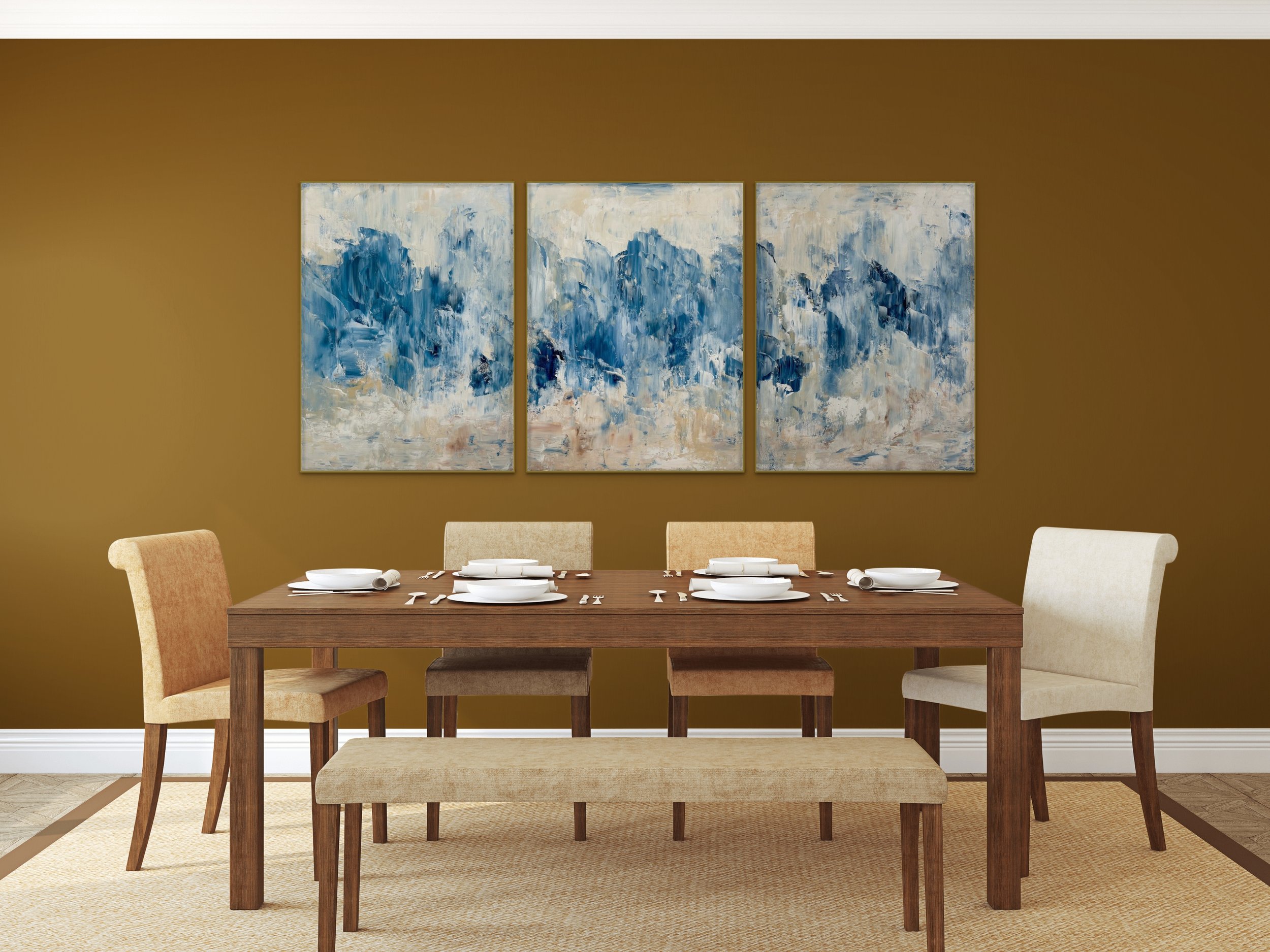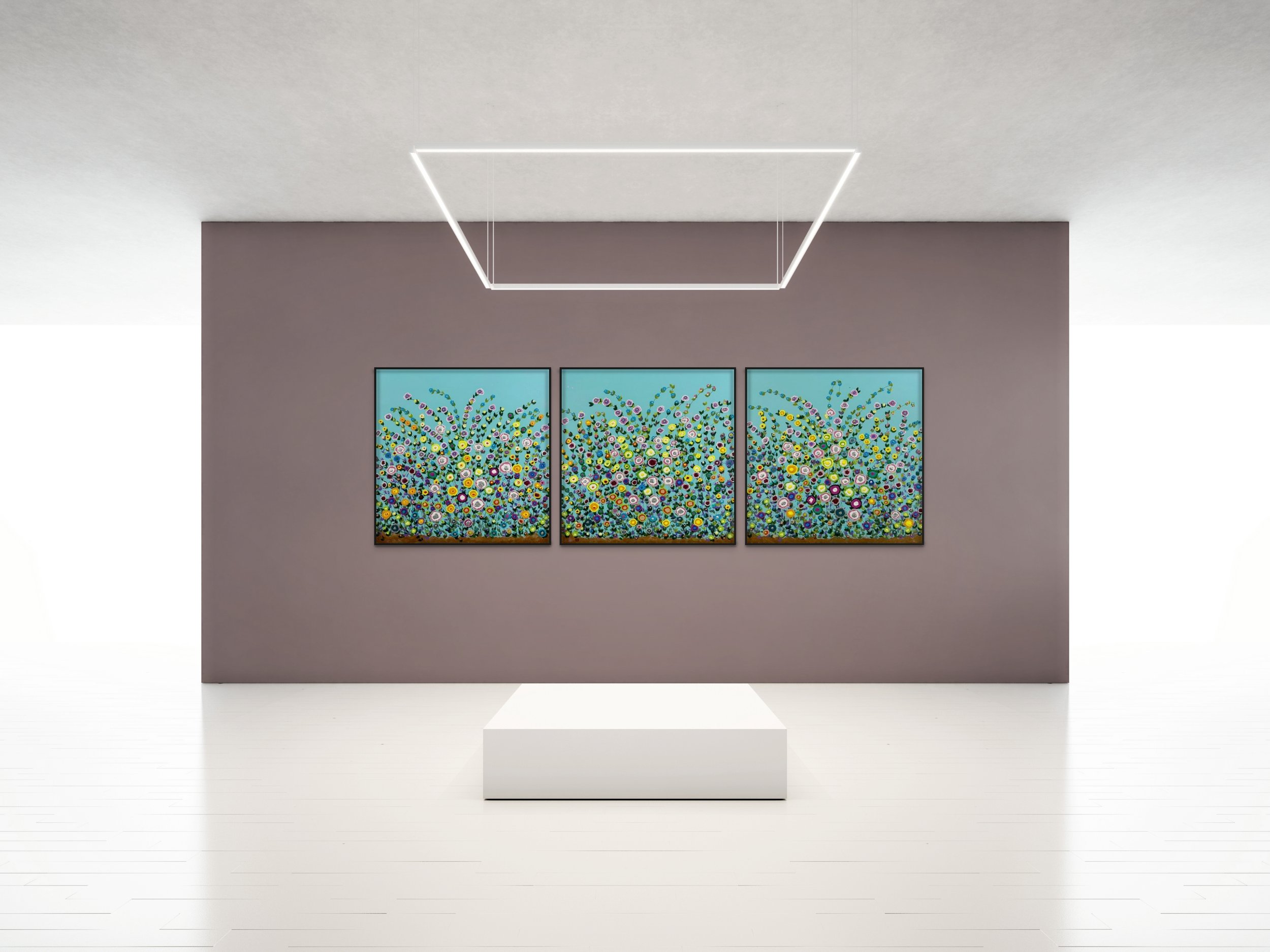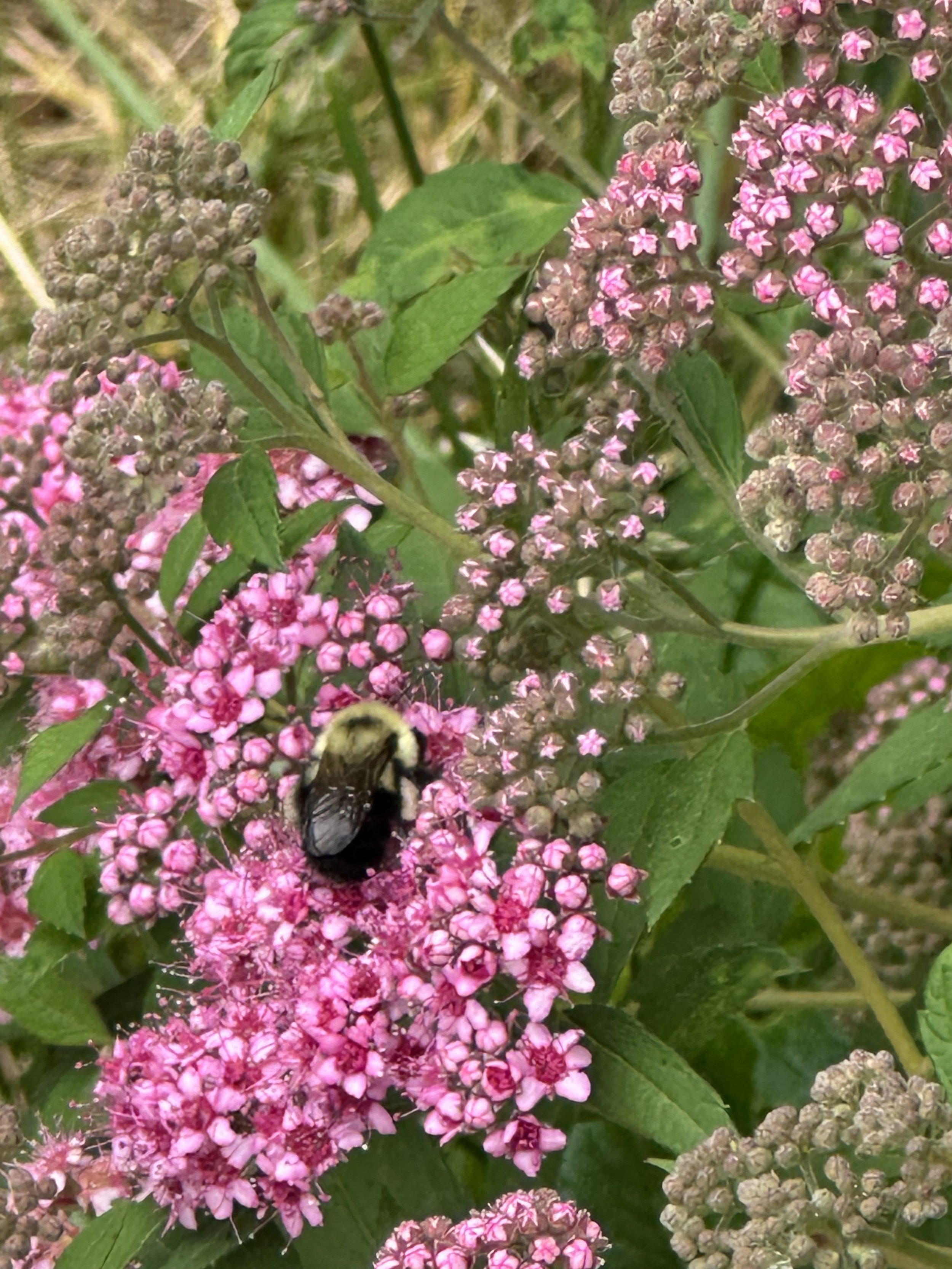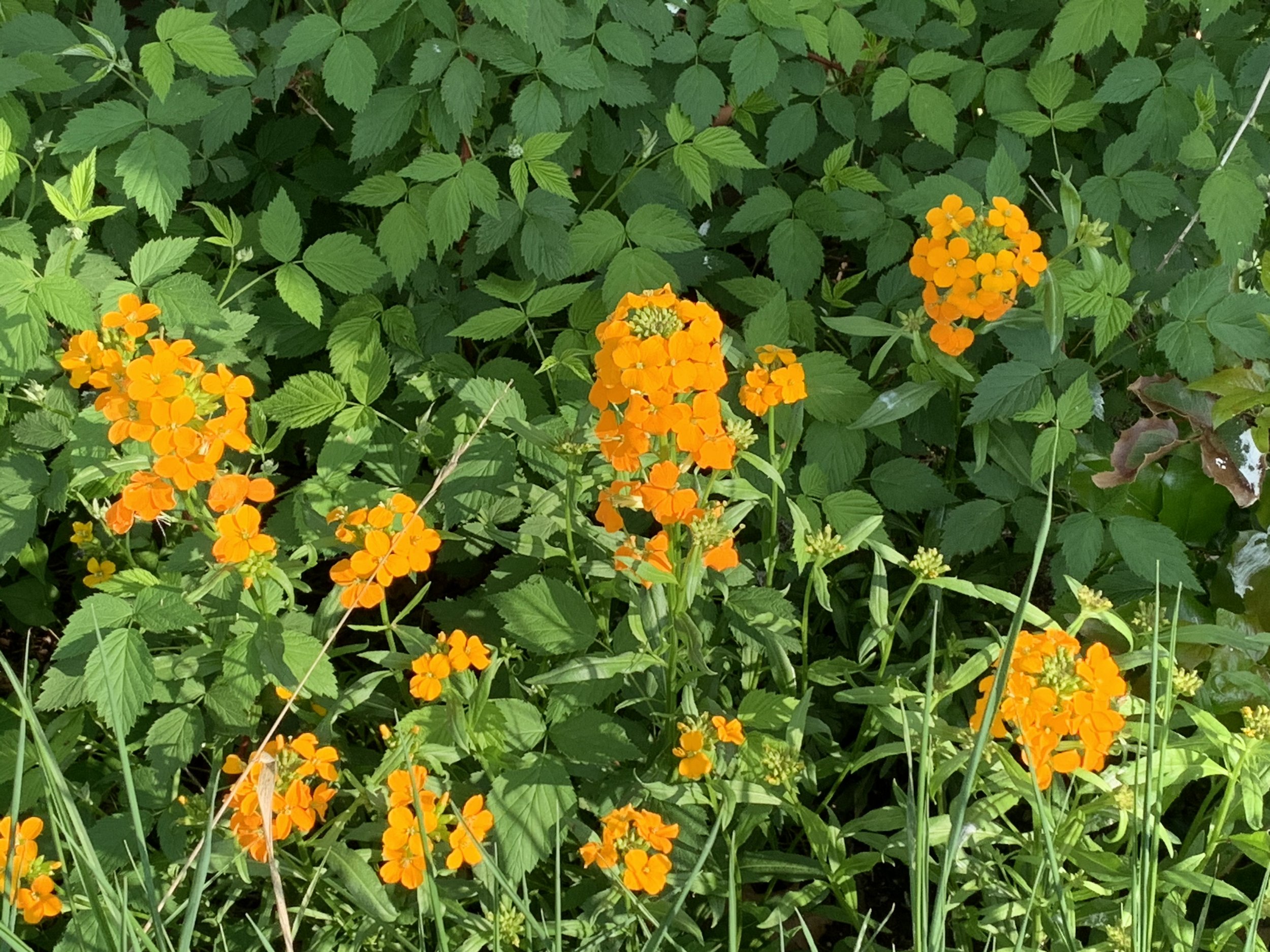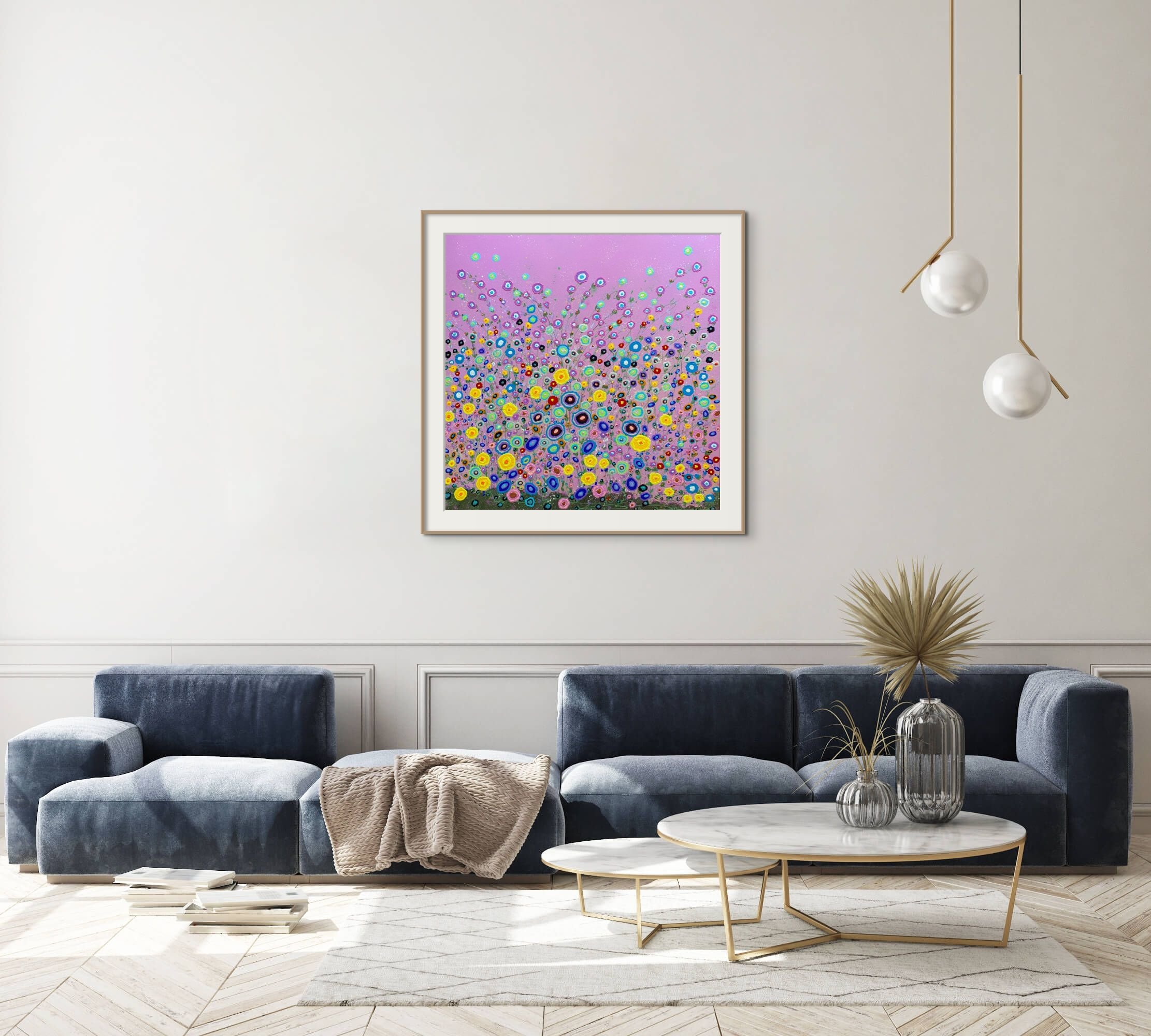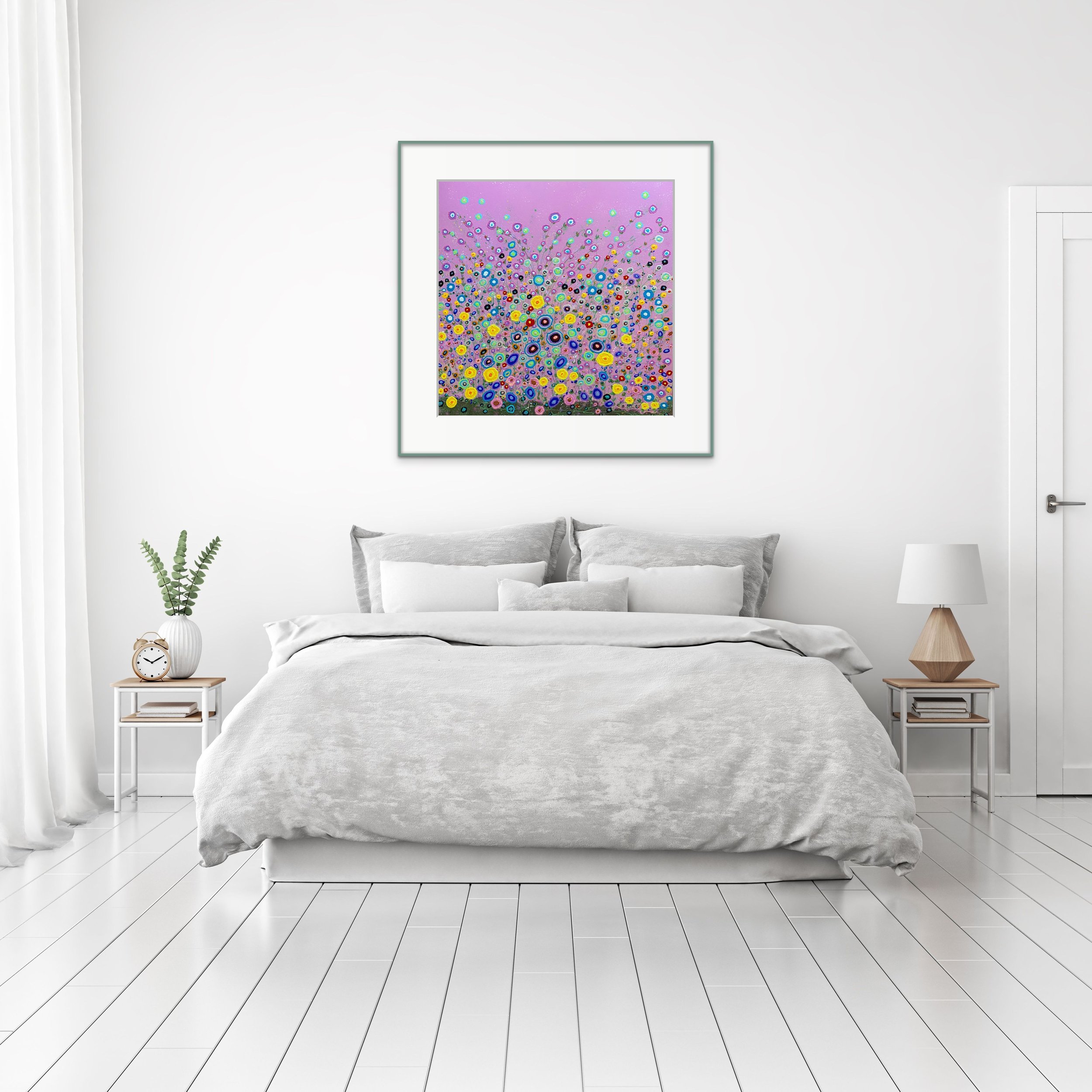At The Heart Of My Evidence-Based Design Art
Art marketing experts and advisors have been telling me for years that I need to pick one art category and paint in it.
I tried to stay in one art category, figuring that my sales figures would eventually show me the right direction to take, but then I kept selling and selling in all of my categories.
Next, I thought I’d find my one big winning category when my art got viewed by art curators from around the world. If you look at my dorotheasandraart.com website’s first page and scroll down to the 2025 International Curations, you’ll laugh. I haven’t posted them all, but right now, I am in 44 different international art curations—and the art curators seem to like my art in all the different categories and styles I paint.
Thankfully, it was my evidence-based design knowledge and training that eventually helped me understand that I really do have one central item running through all of my art:
I discovered that—whether it’s a painting about sustainability, an evidence-based design floral impressionism, a water-inspired movement composition, or even an intense abstract—AT THE HEART of every single one of my paintings are elements of LOVE and CARE.
If the inside of my art could speak, it would say, “In this painting is love and caring about human health and happiness.”
The Happiness Factor by Dorothea Sandra, EDAC, 5’x8’
















Using my Evidence-Based Design Certification (EDAC) training, the colors are bright, cheerful, and welcoming. Viewers can see through the stems, which scientific studies have shown to create safety in human minds. Flowers rooted in soil suggest a continuation of life, unlike cut flowers in a vase, which will soon die. The yellow sun, with its healthy-looking morning glow, gives many viewers the feeling that “survival” will be easy, which creates chemicals in the brain (like dopamine) that make humans feel happiness.
At the heart of this painting is a deep care for human health and happiness.
Happy Sustainable Memories by Dorothea Sandra, EDAC, 5’x8’
This next painting, Happy Sustainable Memories, is an entirely different style of art, but at its heart—like in The Happiness Factor—is a sincere caring about human health and happiness.
In evidence-based design and art, local scenery is often suggested as a composition. Instead of focusing on a snapshot of a local scene, I chose in this painting to take in an entire journey within a local area and represent it through art.
The composition was inspired by nature and a trip from Pasadena, California, along the super busy Foothill Freeway on my way into the desert area near Palm Springs. In this painting, I chose the cheerful colors of yellow, muted pink, and orange to represent the mountains. There is an abundance of sand in the desert, so I used Liquitex’s professional-level unbleached titanium/beige (with a touch of gold) color for the painting’s sky and background. In evidence-based design, you don’t need to portray everything realistically; for instance, creating a blue sky isn't always necessary.
For people/patients who know the area, this painting—in a fun and happy abstract/expressionism/impressionism style—reassures and comforts and recenters them by visually connecting them to their nature-filled and sustainable beautiful local scenery.








This next style of art—where many of my SMART CITY ART series abstract paintings were featured at the 2025 SRI Sustainability Research and Innovation International Congress in Chicago—radically differs from most of what I do.
At first, I was confused and thought, “Here I go again, taking off into yet another different direction.” It took some time, and again, I believe my evidence-based design training and certification helped me understand that underneath even these abstract paintings was this same caring and love for human health and happiness.
My SMART CITY ART abstract series is about caring about human health and happiness, not just individually, but collectively within communities.
Each painting has a smart city technology and sustainability message and a fun, happy, modern flow. In addition, embedded within each painting’s composition are smart city technology and sustainability symbols and iconography.
The paintings include scientifically acknowledged elements that lead to improved human health and happiness: nature-based solutions, blue areas, 15-minute walkability, financial equity, governance, and so much more.
My art at the 2025 SRI Sustainability Research and Innovation International Congress in Chicago, USA.
Smart City Green, Smart City Equity, and Smart City Collaboration
Pretty City Art
Dynamic Cities Of The Future
Even within these dark and ominous paintings below, I realized that my love and care for human health and happiness was still the motivation at the bottom/heart/soul of all of my art. It was the energy behind everything that gave all of my paintings life.
In Middle Class Anger, I was concerned for human health and happiness as I watched the U.S. middle class lose economic stability and standing. In Chaos Enjoying Power, which was created about a month before the first “NO KINGS” rally even occurred, I was worried that power in chaotic hands would harm people and reduce human health and happiness.
Middle Class Anger
Chaos Enjoying Power
With my floral impressionism art featured on the 2025 cover of Healthcare Design magazine, all the way to this dark and sinister abstract art video below from Opulent Art in London, it seems as if my art is all over the place—but it isn’t.
The message is always the same: A care of human health and happiness is what my paintings are all about!
(In the video, starting around 2:30 minutes, Chaos Enjoying Power holds a premium place.)
Did You Know This About Our Health And Art?
Did you know that some evidence-based designs and art are no longer categorized as just decorative? It’s the difference between designing for wall decoration to designing for health in a physical environment.
Did you know that some evidence-based designs and art are no longer categorized as just decorative?
Based on study after study, evidence-based designs and art have become part of the Environment Of Care.
“The Environment Of Care is the understanding that the experience someone has in a healthcare delivery system is a function of six components: physical environment, layout and operations systems, people, concept, and implementation.” (Integrating Evidence-Based Design, Practicing The Healthcare Design Process, The Center For Health Design)
Evidence-based designs are successful when they consider the entire Environment Of Care experience. It’s the difference between designing for just decoration (Wow! That color will look fabulous with this sofa!) to designing for health in a physical environment (Wow! That evidence-based design with those colors will look fabulous with this sofa AND they will benefit my health by meeting the guidelines of evidence-based design!).
A World Health Organization report, based on evidence from over 3,000 studies identified “prevention of illness” as a major role for the arts. What were some of the beneficial links between the arts and health?
The psychological benefits were enhanced self-efficacy, coping, and emotional regulation.
The physiological benefits included lower stress hormone responses, enhanced immune function, and higher cardiovascular reactivity.
The social benefits between arts and health showed reduced loneliness and isolation, enhanced social support, and improved social behaviors.
The behavioral benefits indication from these studies were increased exercise, an adoption of healthier behaviors, and skills development. (WHO, 2019 Report on Arts and Health)
Today, study after study shows benefit after benefit of evidence-based designs.
I am a member of The Society Of Experimental Artists and I like to experiment by taking credible scientific/medical study results and translating them into works of art. Although I have created quite a bit of art using the established evidence-based design principles and guidelines, not too much evidence-based design creation and analysis has been done with abstract art.
Here are some of my earliest experimentations into the world of evidence-based design and abstract art.
Mastering Life’s Complexities got sold to a gallery director the first day I had it on display at the gallery.
I love to donate art to raise money. Power And Gold I donated to a Crooked Tree Arts Center fundraising event in beautiful Bay Harbor, Michigan.
Power In Action is a painting I just love to have around. The colors are so deeply amazing and they move. I put it for sale on my website (https://thewonderfulworldofdorotheasandraart.com), but I haven’t turned it over to any gallery. I think I’m hoping it never sells. LOL!
With all three of these paintings, I was going after strong (at least by evidence-based design standards) POWER AND MOVEMENT WITHOUT CAUSING ANY STRESS.

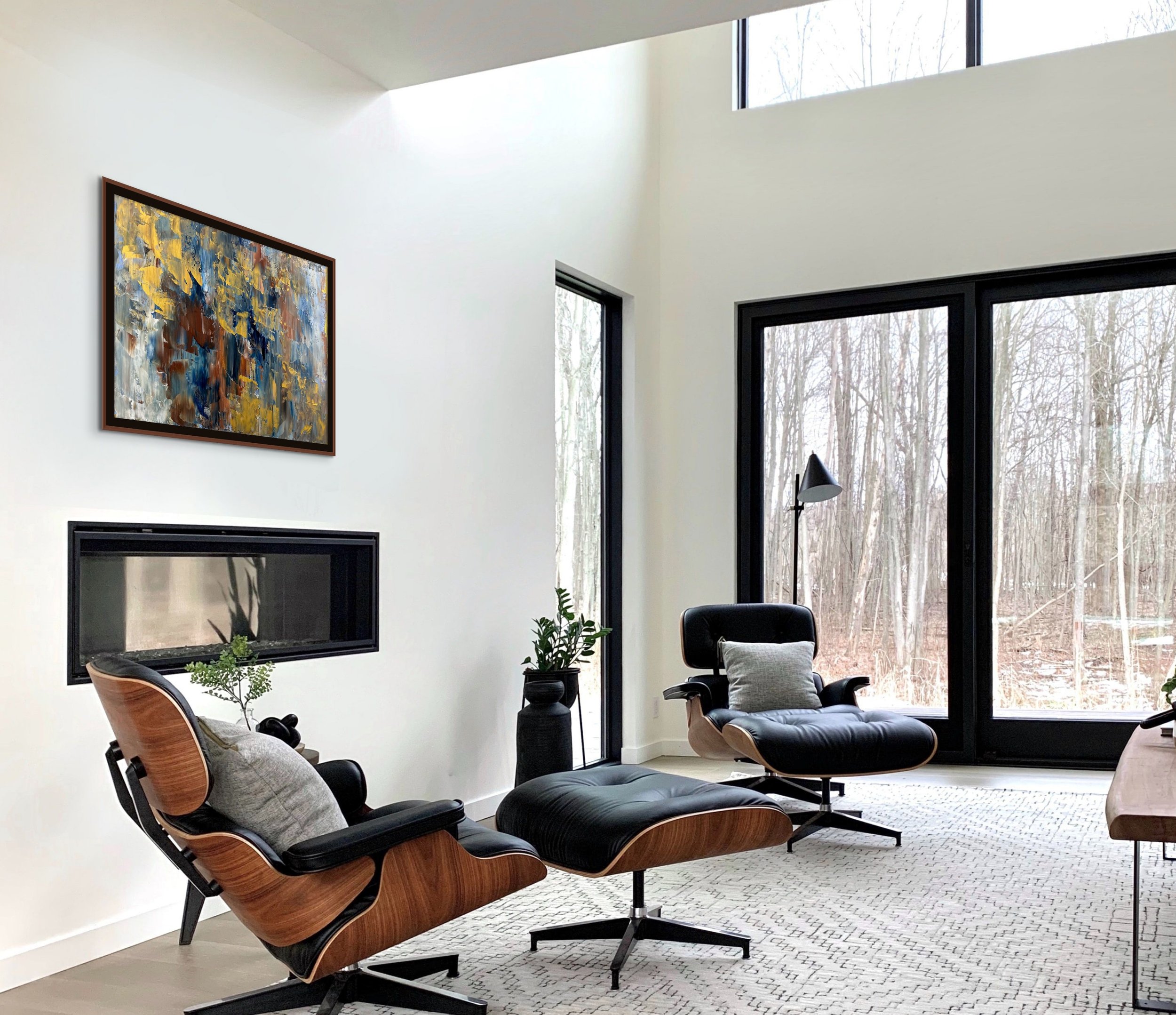
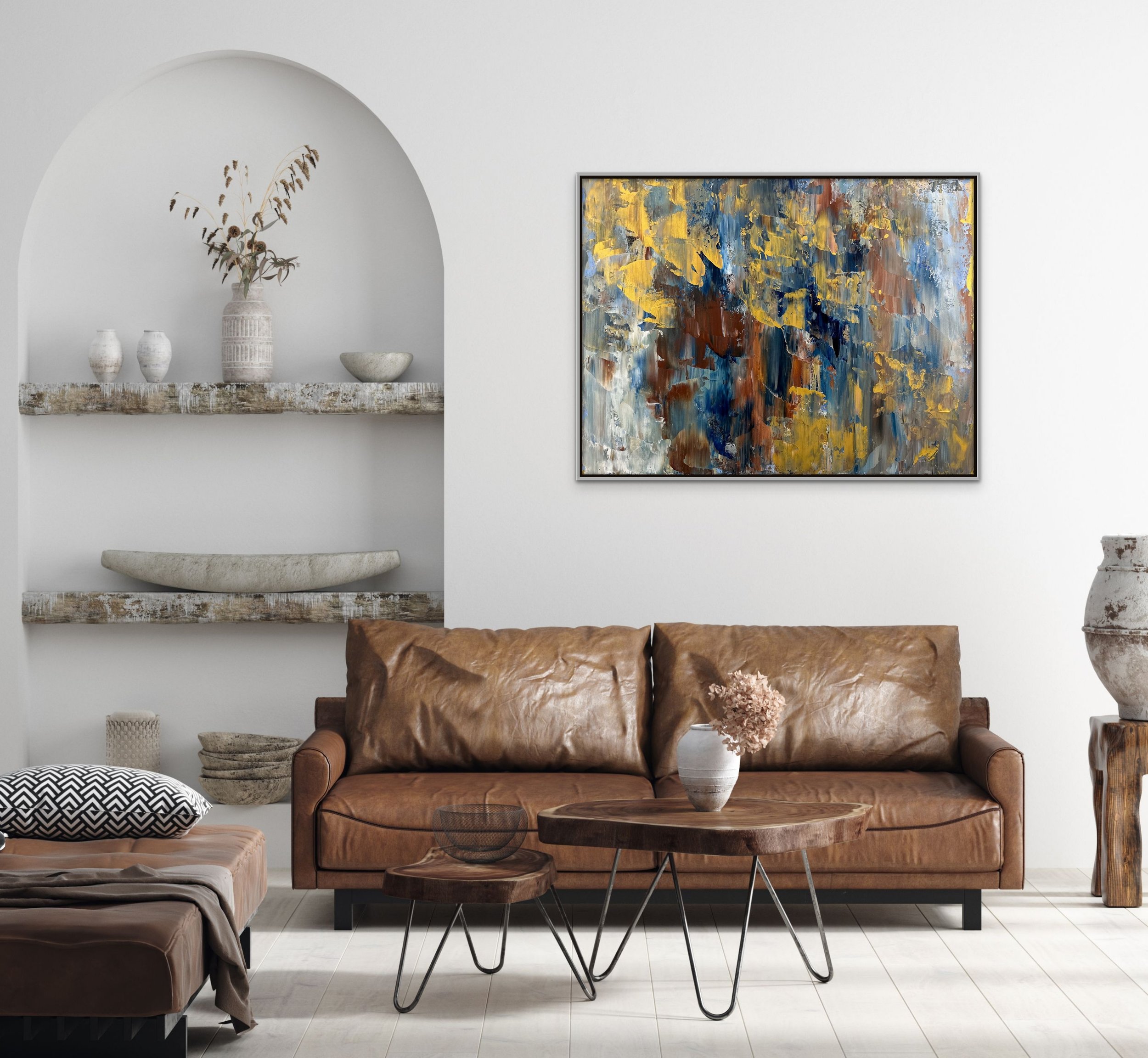
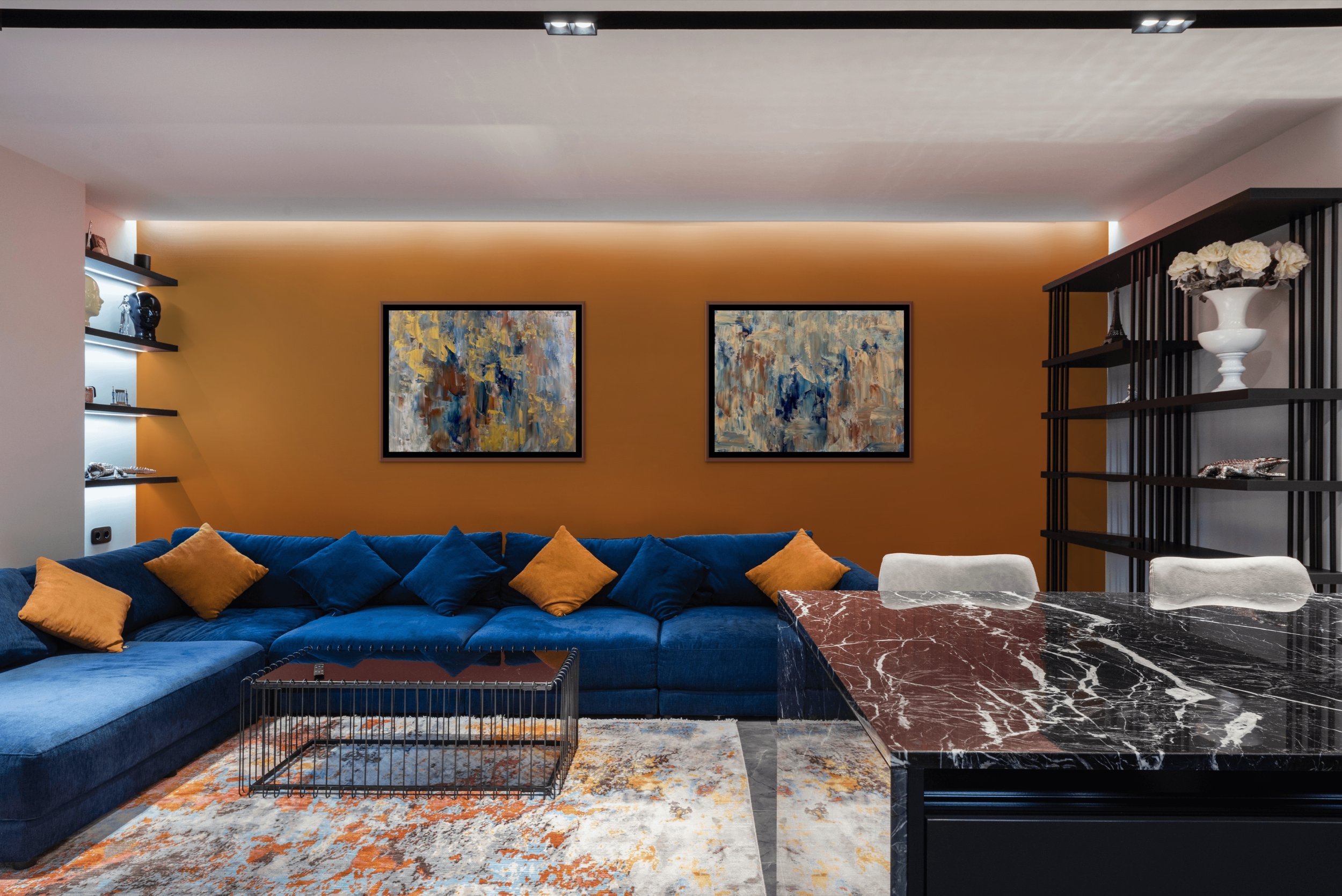

Take a peek inside my new book, 100 Days Of Happy Happy Art, Evidence-Based Design.
There’s even a chapter on neuroscience and art.
Creating Joy In Abstract Art
Is it possible to create a modern work of abstract art that triggers the brain to create feelings of joy?
Is it possible to create a modern work of abstract art that triggers the brain to create feelings of joy?
Personally, I’m convinced of it. What is my reasoning? Buyers tell me all the time how happy my art actually makes them feel.
What’s the secret? Is it super talent or artistic genius or is it training and certification in Evidence-Based Design? I believe it’s a combination of talent and training. Based on established medical and scientific research, I know there are relationships between design factors and healthcare outcomes, especially when people view nature. I create and sell an abundance of nature scenes (see my websites dorotheasandra.com and the landscape category of thewonderfulworldofdorotheasandraart.com) but I also love to create and believe in abstract art as health and happiness sources.
I’m a member of The Society of Experimental Artists and also hold the EDAC (Evidence-Based Design Accreditation and Certification) designation, so I have a keen interest in trying new and different ways to create art.
Joyful Movements by Dorothea Sandra
In this triptych titled Joyful Movements, I experimented with using acceptable “evidence-based design” colors (soft and gentle) and combining them with “the abstract essences” of nature’s wind, rocks, sand, and water. Solely as an abstract work of art, Joyful Movements holds it own. The colors are amazingly beautiful and the palette knife movements create deep interest and intrigue.
My goal when designing this was to see if I could connect “evidence-based design” guidelines with “abstract art” techniques, so I stuck with “the essences” of nature—rather than identifiable shapes—for the purpose of keeping the composition free of too much impact and stress. I wanted this piece to be beautiful, but I also wanted it to do more for us. I wanted it to be gentle and soothing and to remind of us of nature’s amazing healing powers.
I wanted the brains of viewers to be reminded of nature’s water and sand and wind and rocks rather than to be touched (impacted) by them. Many of today’s neuroscientists have conducted studies on our brains and art. Professor Semir Zeki, a neurobiologist from the University of London, discovered in his studies: “When a person views art they find beautiful, it triggers an immediate release of dopamine into the brain—a chemical related to feelings of love, pleasure, and desire.”
Pierre Lemarquis, a French neuroscientist, concluded: “Art of all kinds acts on our brains in a multi-faceted dynamic way. Neural networks are formed to achieve heightened complex states of connectivity. Art can sculpt and even caress our brains.”
My overall desire for Joyful Movements was to achieve a work of art with moving nature essences that evoked in us feelings of happiness and healing.
Although this painting was created after 100 Days Of Happy Happy Art, Evidence-Based Design was published, here is an excerpt about designing with water from my book. There’s more to just painting water and nature elements when it comes to meeting all the evidence-based design standards.
For me to create “happy” art, I remember that the medical/scientific “evidence” matters.
“In evidence-based art, compositions with water should provide healing. Calm water scenes are preferred, while gushing rapids or crashing ocean waves should be avoided. Even a trickling water fountain might create negative experiences for people with full or nonfunctioning bladders.” (Distinctive Art Source, “Healthcare Art Bloopers,” 2023)
Creating Joy In Abstract Art
Is it possible to create a modern work of abstract art that triggers the brain to create feelings of joy?
Is it possible to create a modern work of abstract art that triggers the brain to create feelings of joy?
Personally, I’m convinced of it. What is my reasoning? People tell me all the time how happy my art actually makes them feel.
What’s the secret? Is it super talent or artistic genius or is it training and certification in Evidence-Based Design? I believe it’s a combination of talent and training. Based on established medical and scientific research, I know there are relationships between design factors and healthcare outcomes, especially when people view nature. I create and sell an abundance of nature scenes (see my websites dorotheasandra.com and the landscape category of thewonderfulworldofdorotheasandraart.com) but I also love to create and believe in abstract art as health and happiness sources.
I’m a member of The Society of Experimental Artists and also hold the EDAC (Evidence-Based Design Accreditation and Certification) designation, so I have a keen interest in trying new and different ways to create art.
Joyful Movements by Dorothea Sandra
In this triptych titled Joyful Movements, I experimented with using acceptable “evidence-based design” colors (soft and gentle) and combining them with “the abstract essences” of nature’s wind, rocks, sand, and water. Solely as an abstract work of art, Joyful Movements holds it own. The colors are amazingly beautiful and the palette knife movements create deep interest and intrigue.
My goal when designing this was to see if I could connect “evidence-based design” guidelines with “abstract art” techniques, so I stuck with “the essences” of nature—rather than identifiable shapes—for the purpose of keeping the composition free of too much impact and stress. I wanted this piece to be beautiful, but I also wanted it to do more for us. I wanted it to be gentle and soothing and to remind of us of nature’s amazing healing powers.
I wanted the brains of viewers to be reminded of nature’s water and sand and wind and rocks rather than to be touched (impacted) by them. Many of today’s neuroscientists have conducted studies on our brains and art. Professor Semir Zeki, a neurobiologist from the University of London, discovered in his studies: “When a person views art they find beautiful, it triggers an immediate release of dopamine into the brain—a chemical related to feelings of love, pleasure, and desire.”
Pierre Lemarquis, a French neuroscientist, concluded: “Art of all kinds acts on our brains in a multi-faceted dynamic way. Neural networks are formed to achieve heightened complex states of connectivity. Art can sculpt and even caress our brains.”
My overall desire for Joyful Movements was to achieve a work of art with moving nature essences that evoked in us feelings of happiness and healing.
Although this painting was created after 100 Days Of Happy Happy Art, Evidence-Based Design was published, here is an excerpt about designing with water from my book.
“In evidence-based art, compositions with water should provide healing. Calm water scenes are preferred, while gushing rapids or crashing ocean waves should be avoided. Even a trickling water fountain might create negative experiences for people with full or nonfunctioning bladders.” (Distinctive Art Source, “Healthcare Art Bloopers,” 2023)
Today’s Mood Busting Art
Is it possible to bust through a bad mood with art?
Garden Holiday by Dorothea Sandra, EDAC
As many of you know, we live in “interesting” times. So many people today are stressed or sad or deeply troubled by something or someone. I like to use my art to fight against this by creating credible pieces that bust through these moods and create upward movement feelings of happiness and hope and joy. Using well-researched guidelines, I like to reach inside the brain through art and help shift a negative mood into something positive.
From the 1960s until today, serious researchers with very serious studies…from different countries…from different multidisciplinary fields have converged to create a new field of art called Evidence-based Design. According to the National Library of Medicine at the National Institute of Health, “Evidence-based design is scientific analysis methodology that emphasizes the use of data acquired in order to influence the design process in hospitals. It measures the physical and psychological effects of the built environment on its users.”
Today, evidence-based design isn’t just for hospitals. It’s for all of us. It is for many of the places humans go. What is my role in all of this? A very small one—but I think an important one. Today my art hangs in hospitals, businesses, organizations, and homes. Using my artistic talents and evidence-based design training and certification—just as I did in this triptych art called Happy Garden—I very deliberately and very strategically create happy, happy art for today’s built environments.
People often ask me where I get my inspiration for this style of painting I call Bubble Art. These photos of flowers come from just two of my yards in Northern Michigan. I live in a super clean, healthy environment and inspiration always seems to be all around me—everywhere I seem to look. Nature is a truly powerful healer. When we can’t be out in it, putting art on our walls that captures nature’s fun and beauty often helps.
(I keep 100 percent pesticide-free yards with many bee and butterfly friendly plants. The bees this years are plentiful. I have even seen up to 8-10 bees on one bush.)
In a Garden Holiday, I used my evidence-based knowledge to select the cheerful background color. I painted the flowers in soil to give the artwork a rooted to our life-giving earth feel. Flowers and stems are never similar or boring in nature, so I gave this work an abundance of fun-filled stem twists and turns, pops full of flowery color, and many hints of humor.
If you would like to learn a bit more about evidence-based design and see how I applied it to my art, my new book, 100 Days Of Happy Happy Art, Evidence-Based Design, is available through Amazon.
Bubbling With Happy Smiles
Today’s art to make us smile.
Creating happiness is a gift, and I love to use my artistic talents to help others smile.
Bubbling With Happy Smiles by Dorothea Sandra
What Happens To Our Brains On Art?
The research results are in: according to The Telegraph in the United Kingdom, “Looking at a gorgeous painting, sculpture, or other artwork, increases blood flow to the brain by as much as 10 percent—the equivalent of looking at someone you love.”
According to professor Pierre Lemarquis, the French neuroscientist who wrote L’art Qui Guérit (Art That Heals) “art of all kinds acts on our brains in a multi-faceted, dynamic way. Neural networks are formed to achieve heightened, complex states of connectivity. Art can sculpt and even caress our brains.”
Isn’t This Exciting?
My goal was to create a work of art that would trigger our brains for fun and laughter and smiles. There’s enough reality in the soil to ground the painting, while the stems take off playfully up and down and around and side to side. The colors are bright and cheerful and full of dynamism and diversity.
So many people have told me this piece instantly busts through bad moods and makes them smile inside. Others have said the flowers communicate that one is perfectly beautiful even when super odd or different or not traditionally formed.
So much of my art is influenced by nature’s water movements and flowers. Here is Bubbling With Happy Smiles, as well as other pieces, on display at the Art In The Loft Gallery in Alpena, Michigan.
People often think of small northern towns as boring. This “authentic arts town” busts with summer activities. Festivals, art, music, water activities, cruise ships docking, amazing natural areas, wildlife, and truly friendly and fun (and open minded) people makes Alpena, Michigan a place I spend lots of time visiting. I’m in two galleries there, and I love it!
Here are some photos of one of the marinas and just one of the many colorful side alleys and back parking lots.





In such a fun and friendly “authentic” place, it’s so easy to get inspired to create happy art. Many of the paintings in my book, 100 Days Of Happy Happy Art, Evidence-Based Design, were influenced by this clean, healthy, and super beautiful area.
This book is not a marketing push. (There are no painting prices published.) It is visually pleasing, as well as an informative journey into a new art field based on science and medical studies called Evidence-based Design.
Creating Power And Beauty In Art
Powerful Beauty is an amazing artwork people love to see.
Powerful Beauty is an amazing piece that people just love to see.
At the opening reception for a summer gallery exhibit, I was standing in front of this painting while talking to a NYC handbag designer for two world-famous fashion brands (who also bought one of my paintings that evening) when a very tall, amazingly elegant woman brushed behind me and whispered, “I l-o-v-e this piece!”
What makes Powerful Beauty such a winner?
To begin with, it was strategically designed to arouse and grab and gently caress. It’s beauty was deliberate and intentional. I am above all else an abstract artist, but I also trained and got certified in evidence-based design. I support the idea of basing designs on actual medical and scientific studies for health and healing and, like the many tools and techniques I use as an artist, I don’t hesitate to use these evidence-based design rules and guidelines while creating even abstract art.
The goal for Powerful Beauty was to create something abstract and full of movement but also balanced, stable, and beautiful to view.
If you would like more information about an artist’s adventures with evidence-based design, check out the book 100 Days Of Happy Happy Art, Evidence-Based Design by Dorothea Sandra.
It’s not just an art book. There’s lots of really cool and thoughtful information in it like, “What Exactly Is The Definition Of Evidence-Based Design?” (Section 1.4) to “What Happens To Our Brains On Art?” (Section 3.1) and “What Is Neuroarts?” (Section 3.2).
So, where did I get the inspiration for this piece? My studio is located in a Great Lakes region surrounded by amazing bodies of water. Almost everywhere I go, I am surrounded by raw, authentic, super clean NATURE. At first sight, this area might look ordinary or just another stretch of beach with rocks and sand, but when you look deeper and capture “the essence” of what is happening all around, it’s truly amazing. There’s always some kind of power or beauty happening.
This painting also made an appearance in the July issue of the London Tatler magazine. It’s #23.
Welcome
Welcome to the wonderful world of Dorothea Sandra Art.
YOU HAVE ARRIVED AT THE WONDERFUL WORLD OF DOROTHEA SANDRA ART!
BLOG #1—From Death To Life
A number of years ago I got diagnosed with two potentially life-ending illnesses. I was surprised when most family, friends, and people I had known for years politely dumped me. Essentially, I was left on my own and alone (with the exception of one brother) to go off into the wilderness and die somewhere.
Well—not only did I not die—I ended up creating a super fun, happy, and absolutely amazing new life. Welcome to the wonderful world of Dorothea Sandra art. Today I’d like to share the power of abstract art and photos and excerpts from my new book 100 Days Of Happy Happy Art, Evidence-Based Design.
Power In Action by Dorothea Sandra
Power In Action is a bold abstract. It reflects the awesomeness and diversity of real power. Done mostly with palette knives, it has intense movement and edge, while still maintaining balance, beauty, and grace. I really like the gold touches. They are there to show that having an abundance of wealth is a fun thing.
I was trained as a child to paint in oil, but today I find super high quality professional-level acrylic paint to be so much more fun. I love the ease in which it goes on, and the colors can be truly amazing. In this painting you can see the influence of the late Roger William Curtis, the famous New England seascape artist. My earliest teachers were trained by him. I still remember wiggling my toes in the damp Gloucester sand while listening to the paint mixing instructions for creating sea spray, water depth, and ominous rocky shores.
In addition to my love of abstract art, I also wrote a book called 100 Days Of Happy Happy Art, Evidence-Based Design. My brush with death had opened my eyes to the importance art can have on the brain, which helps with health, healing, and happiness. I got trained and EDAC (evidence-based design) certified through the Center For Health Design, and it has been one happy artistic adventure after another ever since.
Did you know evidence-based designs use credible medical/scientific studies in their design guidelines? Here is Section 1.1 from my new book.
IS EVIDENCE-BASED DESIGN SOMETHING TOTALLY NEW?
“If you asked the sixth-century BCE Greeks of Epidaurus, they might take you to one of the most celebrated healing centers of the classical world—the Asclepieion hospital. In their hospital, patient rooms faced eastward. Why? It is believed the rooms were intuitively designed and placed toward the sun to promote healing.
Many centuries later, many movements from different countries came together in the 1970s to create a new field called Evidence-based Design.
Who are the people whose forces created this new discipline? Doctors, scientists, architects, interior designers, psychologists, sociologists, anthropologists, and many, many others.
DAY ONE of 100 DAYS OF HAPPY HAPPY ART
The Healing Window, 36”x48”
I’m known as many things in the art world—an artist of hope, an artist who modernizes traditional woodsy compositions, a New England trained artist, a Great Lakes artist, and a 21st century experimental artist.
As a 21st century experimental artist, I like bringing together totally new or different things. Bringing together today’s health, while also thinking of the ancient Greeks, Day One of 100 Days Of Happy Happy Art features a painting of a window view a patient might see from a hospital room.
This painting’s background is of Little Traverse Bay from the back parking lot of the McLaren Northern Hospital in Petoskey, Michigan.
As I composed my images, I imagined I was inside one of the McLaren Northern patient rooms looking out. The flowers are modern and cheerful and uplifting, but I wanted to honor the achievements of those before us by giving elements within the composition a more rough, ancient Greek Asclepieion feel to it.”


















